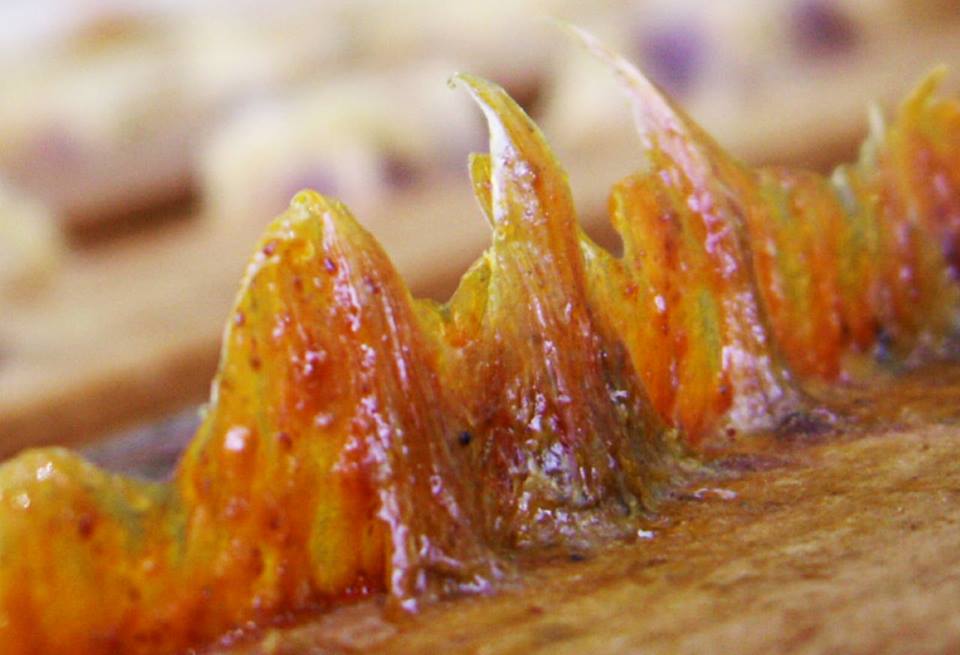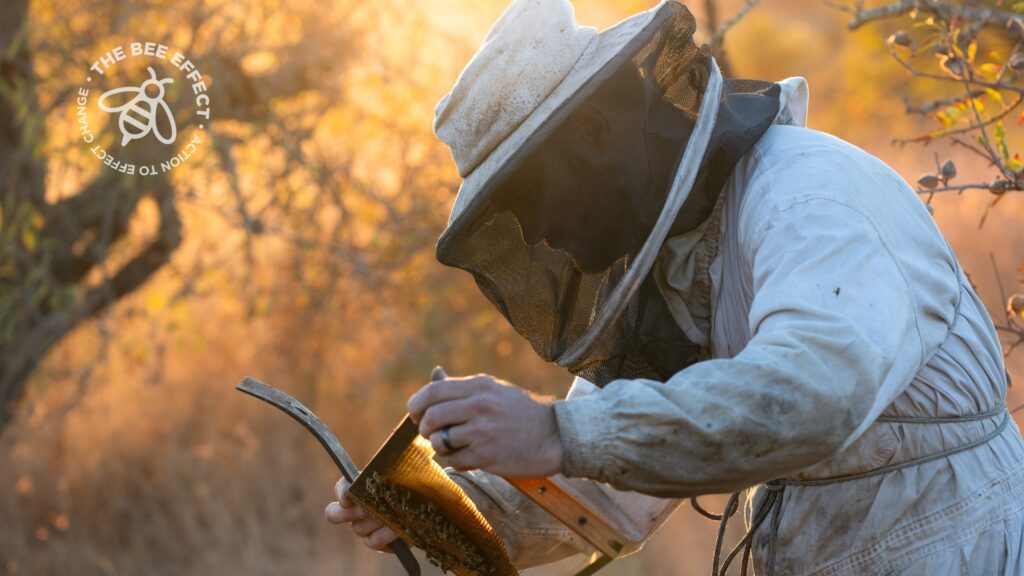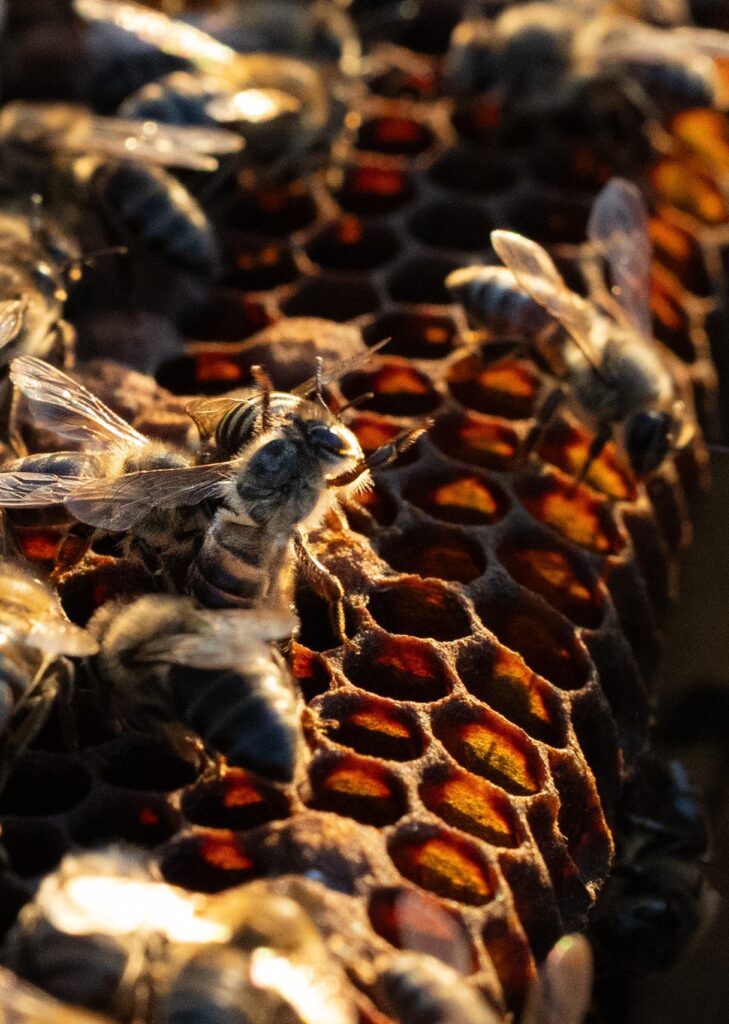There is a quiet revolution happening in our hives
Behind the buzz and bustle, South African bees are offering something extraordinary: natural antimicrobials with the potential to challenge drug-resistant bacteria, soothe chronic infections, and even contribute to the global fight against tuberculosis.
Presented at the 2025 South African Apiarists Symposium in Cape Town, this body of research, led by Prof Sandy van Vuuren and her team at Wits University, brings the medical power of South African honey, propolis and bee venom into sharp focus. And it’s local. This is not imported science. This is our bees, our flora, and our apiarists.
HEALING THE GUT
Honey and Propolis vs. H. pylori
One of the key drivers of this research is Helicobacter pylori, a stubborn bacterial resident of the stomach lining that plays a leading role in gastric ulcers. With rising antibiotic resistance becoming a global health crisis, traditional treatments are increasingly failing to combat infections effectively.
The Wits team tested 80 honey samples and 50 propolis extracts from across South Africa against H. pylori. A third of the honeys outperformed even Manuka. When these honeys were paired with probiotics like Lactobacillus acidophilus, their antimicrobial activity became even more potent. This synergy between natural agents isn’t just fascinating, it’s medicine in motion.
Propolis, often called the hive’s pharmacy, held its own as well. More than half of the tested samples showed stronger activity against H. pylori than the Brazilian “gold standard” propolis. None were toxic. Through chemical fingerprinting, compounds like pinocembrin and pinobanksin were revealed as likely contributors to this effect.
Recent studies from Prof van Vuuren’s lab further support these findings. A 2024 investigation demonstrated that combinations of Lactobacillus rhamnosus with 18 out of 21 South African medicinal plant extracts showed a two-fold decrease in the mean MBC against H. pylori. Notably, aqueous extracts of Protea repens, Carpobrotus edulis, and Warburgia salutaris combined with probiotics achieved exceptional antimicrobial performance (Dinat et al., 2024).
Importantly, these combinations did not harm beneficial gut bacteria. This aligns with a growing concern around the dysbiosis caused by standard antibiotic treatments, which often contribute to reinfection (Dinat et al., 2024; Helicobacter Review, 2022).
In simpler terms, what this means is that when certain local medicinal plants were combined with healthy gut bacteria, they worked far better at fighting H. pylori than when used alone.
And unlike antibiotics, which often wipe out the good bacteria we need, these natural combinations left the gut’s healthy microbes unharmed. That’s a win all round, with better results against infection and none of the gut damage antibiotics often cause.
Read up on the scienceTHE MEDICAL POWER OF SA HONEY, PROPOLIS AND BEE VENOM. LOCAL RESEARCH. NOT IMPORTED SCIENCE. OUR BEES. OUR FLORA. OUR APIARISTS.
South Africa carries one of the heaviest tuberculosis burdens in the world.
Unique compounds have been found in South African propolis that are not found elsewhere

According to the World Health Organization, over 280,000 new TB cases were reported in 2023, with nearly 55,000 deaths, many of them linked to HIV co-infection. Drug-resistant TB is on the rise, and treatment regimens are growing more complex and less effective.
This is where bee chemistry enters the conversation.
Propolis proved itself again. Select samples from Gauteng, the Free State and the Eastern Cape showed strong antimicrobial effects against Mycobacterium tuberculosis, with some working better than antibiotics alone. When paired with rifampicin, the bee extracts achieved a synergistic result. Not additive, not indifferent, but truly synergistic — meaning one plus one became more than two.
taking on tb with bee chemistry
This could be more than complementary therapy. It could be a shift in strategy, especially for rural communities where TB is often under-treated or resistant to first-line medications.
The research didn’t stop at function. Using advanced chemical analysis, the team identified unique compounds in South African propolis that are not found elsewhere. This is vital, not just for medicine, but for future standards of bee product authentication and provenance.
Bee venom, an untapped antimicrobial frontier?
Let’s talk venom. Harvested from Apis mellifera scutellata, our local honeybee, the venom was tested against a range of skin-specific pathogens including Staphylococcus aureus and Pseudomonas aeruginosa. On its own, bee venom had antimicrobial action. When paired with mupirocin, a standard topical antibiotic, it showed strong synergistic effects. This suggests that bee venom could enhance or even revive the effectiveness of existing drugs.
Toxicity was tested using the brine shrimp assay, and at therapeutic dilutions, both the venom and its antibiotic partners remained within safe zones.
A Honey Soaked Solution
From the lab bench to the bedside, researchers also developed and tested a honey-laden cryogel, a porous, sponge-like dressing designed for wounds. This cryogel not only absorbed exudate but delivered sustained antimicrobial activity, especially against Staphylococcus epidermidis, a common cause of chronic wound infections.
Cryogels and Wound Care
It’s a simple concept. Nature-infused material science. The potential application is huge, especially in rural and under-resourced health settings.
Let’s Breathe
Volatiles, Respiratory Health, and Honey’s Next Chapter
We often associate honey with sore throats and seasonal sniffles, but few understand the science behind it. A pilot project is now underway to profile the volatile compounds in local South African honeys to determine their role in respiratory health.
These volatile markers, including linalool, lilac aldehyde and hotrienol, could eventually form the basis of a national chemical fingerprinting database. This is key for both quality assurance and therapeutic use.
Why this Research Matters
This isn’t just about honey, propolis and venom. It’s about reclaiming the medicinal potential of what our bees produce. It’s about recognising that South African bee products have unique chemical profiles, unique flora sources and unique medicinal capabilities. It’s about data, chemistry, tradition and the future, all housed in the hive.
As we stand at the intersection of biodiversity, biotechnology and health, the question is no longer if bee products have medical value. The question is how soon we’ll integrate them into mainstream treatment strategies, and whether we’ll do so in ways that honour the bees, the land, and the people who tend them.
Because, as always, the hive has answers. We just need to listen.
SOMETHING TO REMEMBER
Any irradiated honey, which includes all imported honey into South Africa, will not deliver the healing benefits it should. Irradiation wipes out all the beneficial enzymes, antimicrobial compounds, and subtle bioactive properties that give raw honey its therapeutic edge. If you’re using honey for health, always choose local, unprocessed, non-irradiated options. Your body (and the bees) will thank you.


